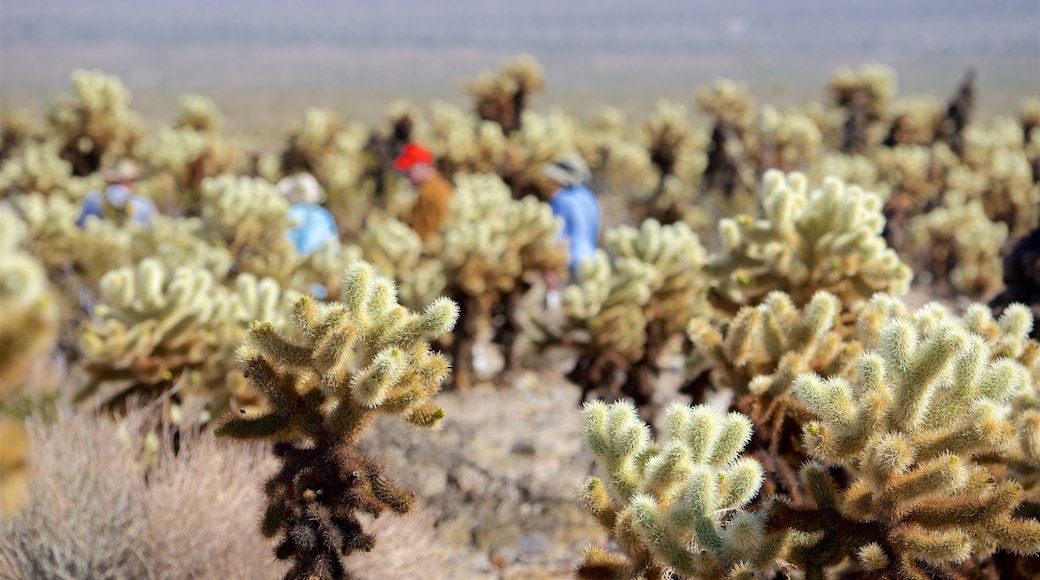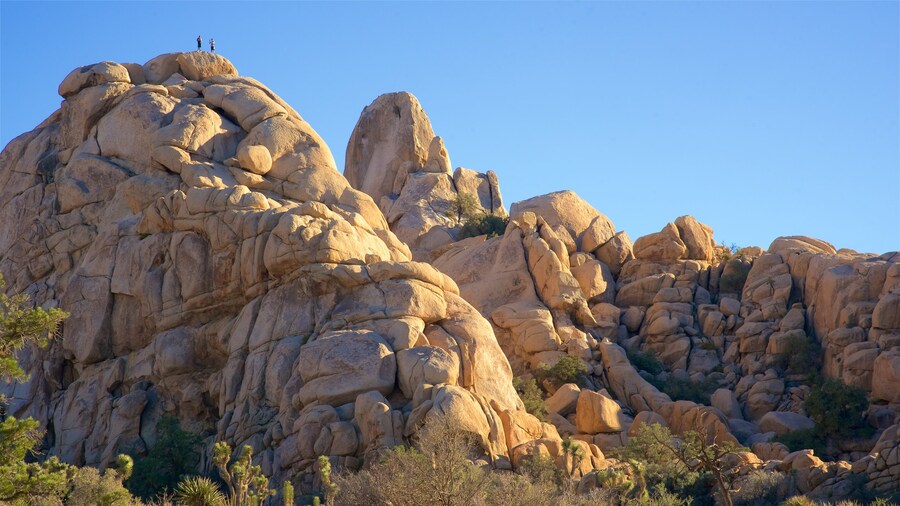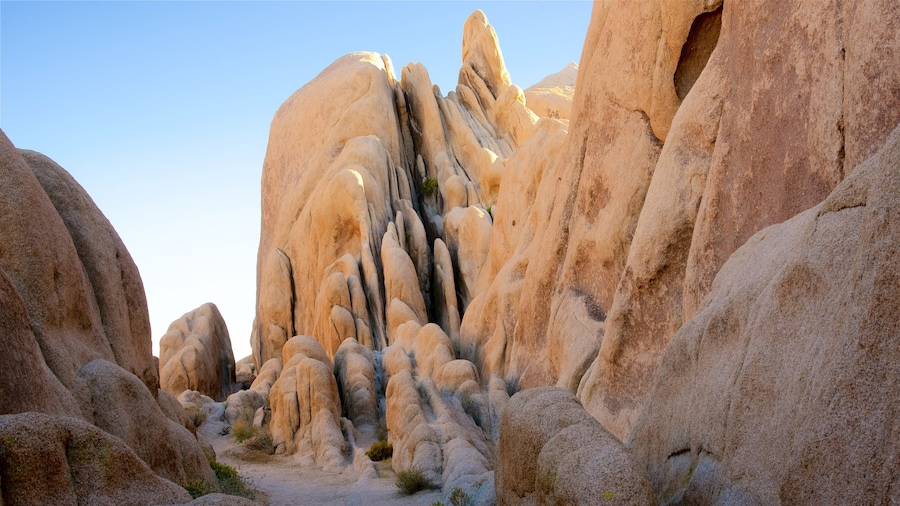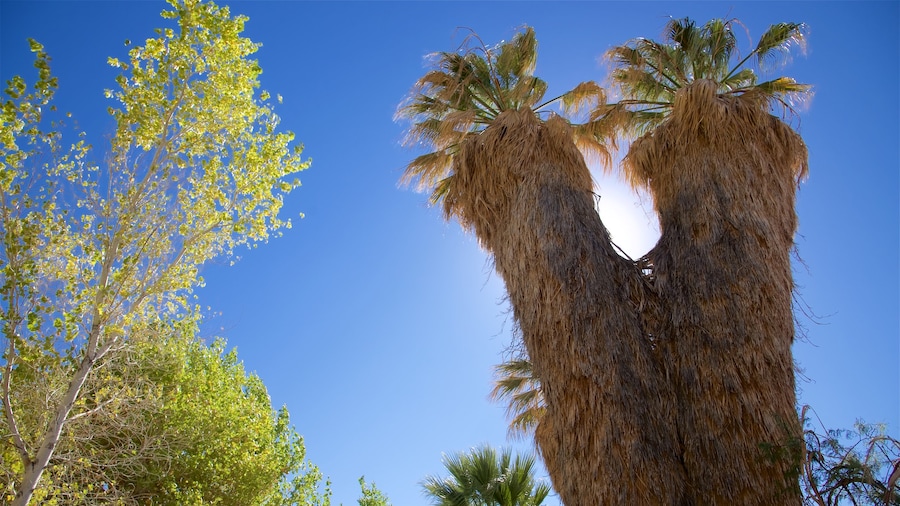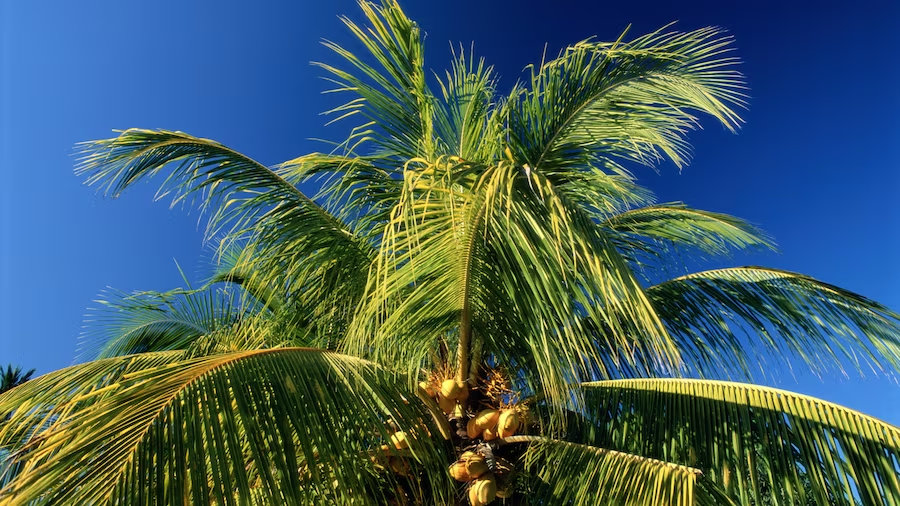Discover the diversity of Joshua Tree National Park on a short walk around a grove of cactus plants that shimmer in the bright sunshine.
Cholla Cactus Garden is a one-of-a-kind natural attraction and a must-see on a tour of Joshua Tree National Park. Come here to follow a trail through an area filled with photogenic, curiously shaped cholla cacti. The natural garden stands in the Pinto Basin, a barren region just south of the confluence of the lower Colorado Desert and upper Mojave Desert.
Look for the garden’s stars, the many cholla cacti, which thrive on a seasonal water supply from nearby Wilson Canyon. Two nicknames are associated with the plant. One is the Jumping Cholla, referring to the ease at which its spikes detach themselves with slight touches. The other is the Teddy Bear Cholla, due to the fuzzy appearance of the silver-colored spines.
Get close to the plants by walking the 1,312-foot-long (400-meter) Cholla Cactus Garden Trail. Interpretive signs provide information about the cacti and the garden’s other plants, including climbing milkweed, creosote bush and jojoba. After spring or summer rain you might see yellow blooms on the cacti. Because many of the plants do not reach eye level, you will get a good view over much of the extended garden. With flowering plants in the foreground and a mountainous backdrop, you’ll have superb photo opportunities.
As you walk, be careful not to touch the plants because the spines are strong enough to pierce clothing, footwear and skin. Interestingly, the dead spines scattered on the ground are fundamental to the reproductive process. Over time they acquire roots and develop into new plants.
Find the garden about a 30-minute drive north of the Cottonwood Visitor Center. Use the small parking lot at the trailhead. Combine your time at the garden with a visit to other park attractions such as Hidden Valley Nature Trail and Skull Rock.
Cholla Cactus Garden is open year-round. Visit in spring, when the plants are in full bloom. Pay the admission fee for Joshua Tree National Park at one of the park’s four visitor centers or at fee machines that take credit cards and are always open. Find further information on the National Park Service website.
